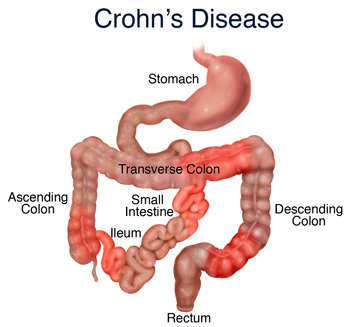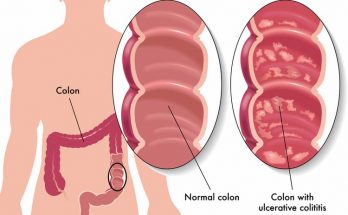Pain occurring in between the chest area and the groin is known as abdominal pain. Abdominal pain is caused by a lot of reasons. Usually abdomen pain does not reflect a serious problem. However, if it persists for a longer time period than it may indicate a health issue related to stomach, liver, pancreas, ovaries or uterus. Pain in the abdomen can instigate from the organs within or around the abdominal cavity. Abdominal pain also includes pain in the aorta, kidneys, spleen, and appendix. Pain in the organs of digestion is also known as abdominal pain.
There are a lot of causes for abdominal pain. Usually, abdominal pain is related to pain in the stomach or indigestion. Sometimes, pain occurs in the organs outside the abdomen but it is called as abdominal pain because the feeling of pain comes from the abdomen. This kind of pain is known as referred pain. Abdominal pain may also occur after a rigorous workout.
Common causes of abdominal pain include food allergy and food poisoning, ulcers, kidney stones, lactose intolerance, bowel obstruction, irritable bowel syndrome, urinary tract infections, heartburn, chronic constipation, indigestion, cancers or tumors, ischemic bowel and inflammatory bowel disease. Mostly, abdominal pain is associated to stomachache and kidney pain.
By taking a few measures you can stop abdominal pain from occurring. For example, drinking plenty of water, performing regular exercise, healthy intake of food, minimizing the consumption of fatty and gas producing foods, taking small meals several times a day, and consuming high-fiber diet can help you stay away from abdominal pain. However, in case of a serious problem, you should contact a doctor immediately.
Abdominal pain, after a heavy exercise or a long run, is quite common. The reasons for abdominal pain after various exercises are weak muscles of the abdomen and the gastrointestinal problems. After a vigorous exercise and heavy breathing, the oxygen level in the muscles decreases, causing cramps. Usually, massaging the affected muscles or slowing down the exercise decreases the pain.
Runners are more prone to gastrointestinal problems as compared to swimmers and cyclists. Gastrointestinal complaints comprise of vomiting, bloating, cramps, stomachache, nausea, flatulence and eructation. Although a little is known about why gastrointestinal issues occur after intense exercises, it is believed that dehydration is one of the prime causes for these disturbances.
Three common types of abdominal pains after exercise include exercise-induced stitch, abdominal hernia and muscle strains. Stitch, also known as the exercise-related transient abdominal pain, causes sharp, tearing pain in the abdominal muscles. The exact reasons for stitch are unknown. However, some theories suggest that it is caused due to the improper blood circulation especially in diaphragm, strained abdominal organs or muscles and higher consumption of water while exercising. In order to avoid stitch, try sipping plain water during exercise. A big glass of water or soft drinks should be avoided as they lead to bloating.
Muscle strains are caused due to abrupt and poor performances causing pressure on the abdominal muscles. Overuse of muscles can also result in muscle strain. Strains can be particularly painful if they occur close to the hipbone, pubic area or near the ribs. In order to avoid strains, you should warm-up before exercising and allow your body to cool down after the workout.
Muscle strains can be of three types depending upon their severity. First-degree muscle strain occurs due to the injury of a few muscle fibers. This causes pain and discomfort while moving around. It usually takes three weeks for the injured fibers to recover. Second-degree muscle strain is caused due to the damage of a large number of muscle fibers. This type of muscle strain takes up to 6 weeks to recover.
The third type of muscle strain occurs due to the rupture of the affected muscle. This kind of strain causes intense pain and difficulty in movement. In extreme cases, the abdominal organs pass out of the tear of the muscle. In such circumstances, the patient needs immediate medical care and sometimes, a surgery. Third-degree muscle strain can take nearly three months to recover.
Abdominal hernia is similar to the third-degree abdominal muscle strain, where the abdominal organs are at a risk of bulging out of the tear in the abdominal wall. Usually, people who have undergone a surgery are at a risk of developing abdominal hernia. Abdominal hernia can cause many serious damages. Treatment for hernia includes surgery and prescribed drugs.

